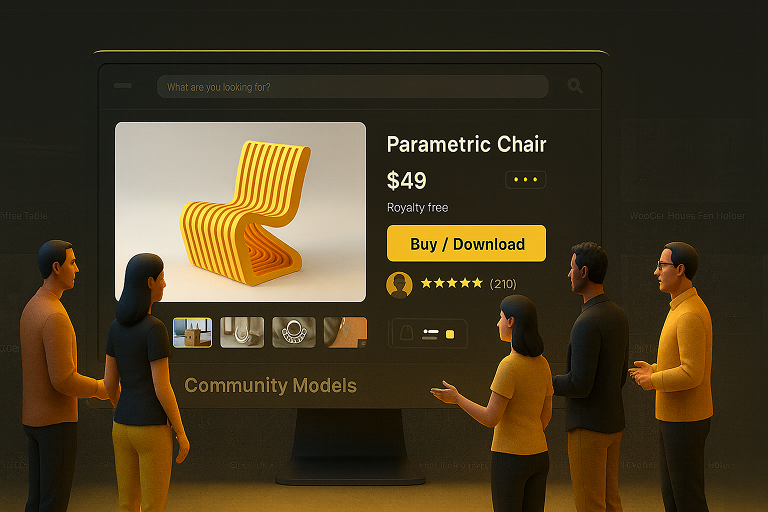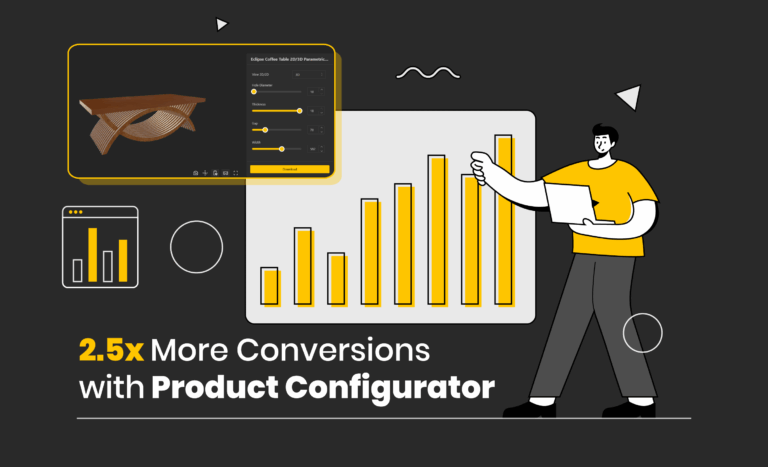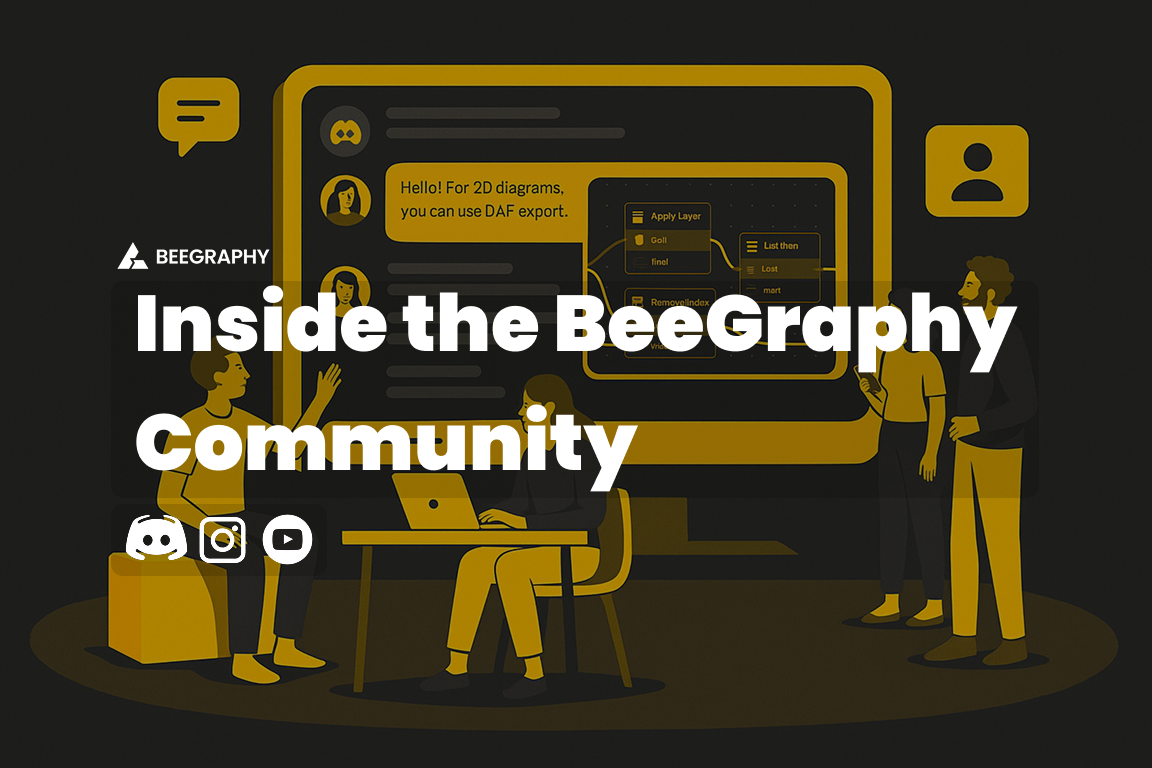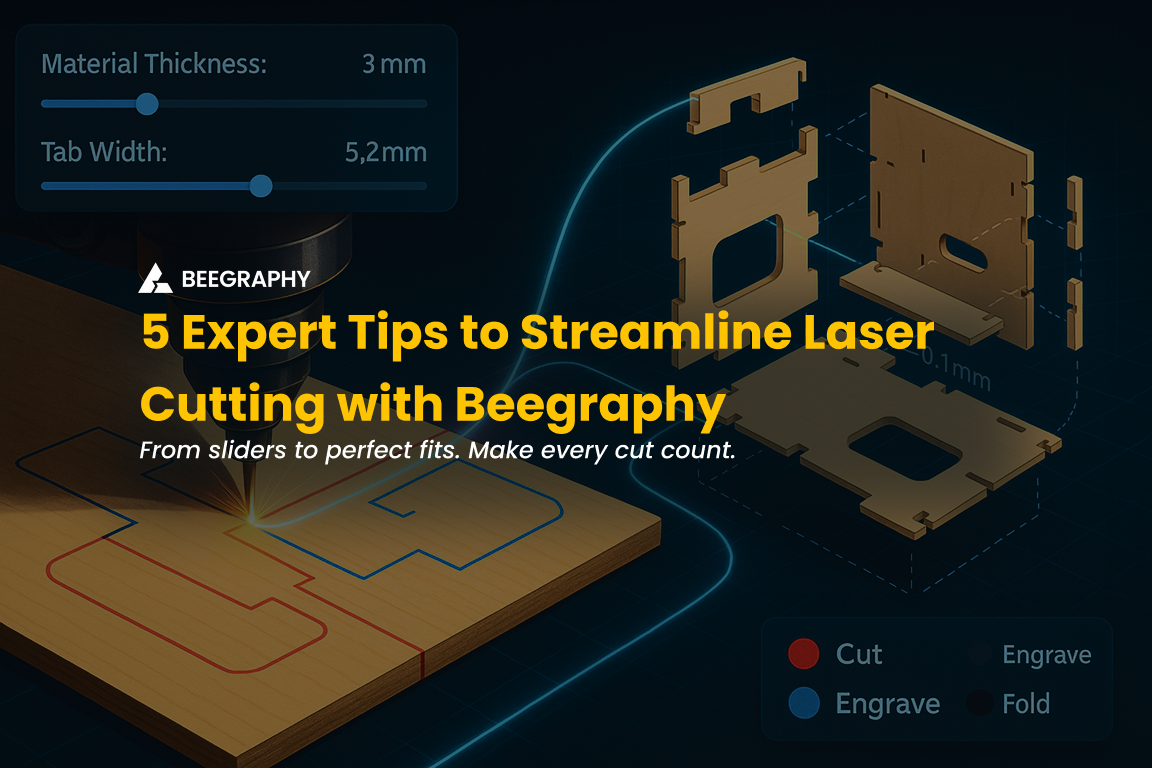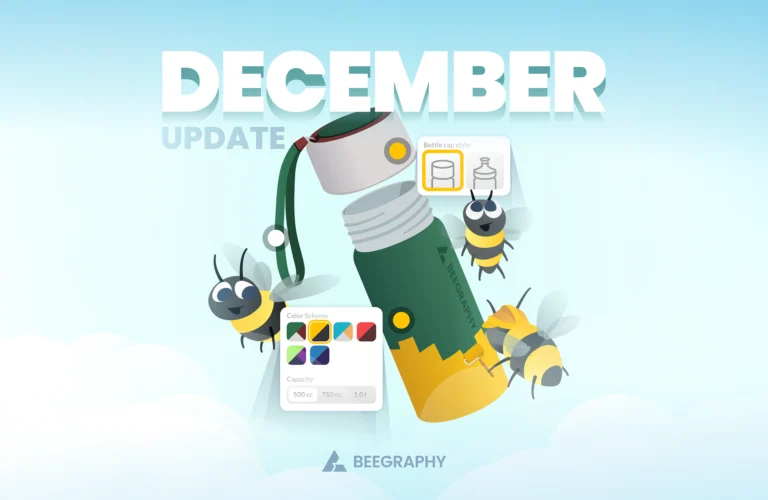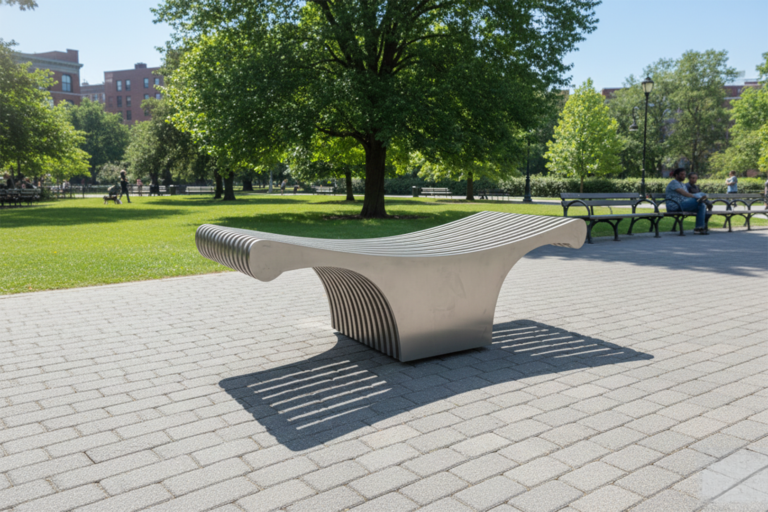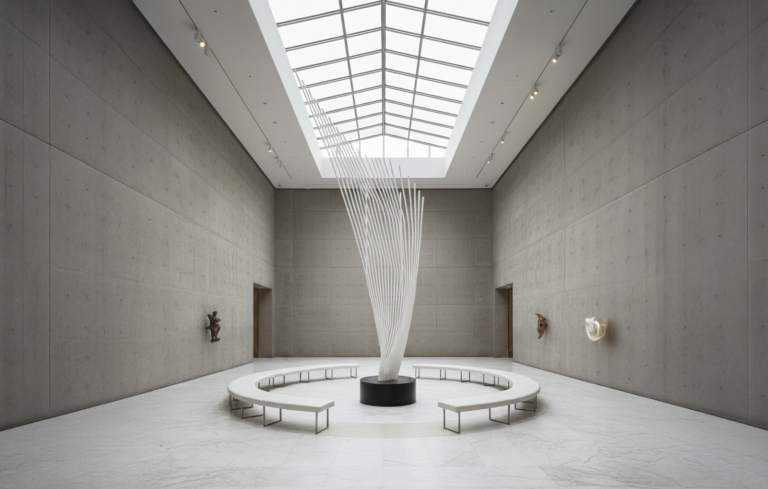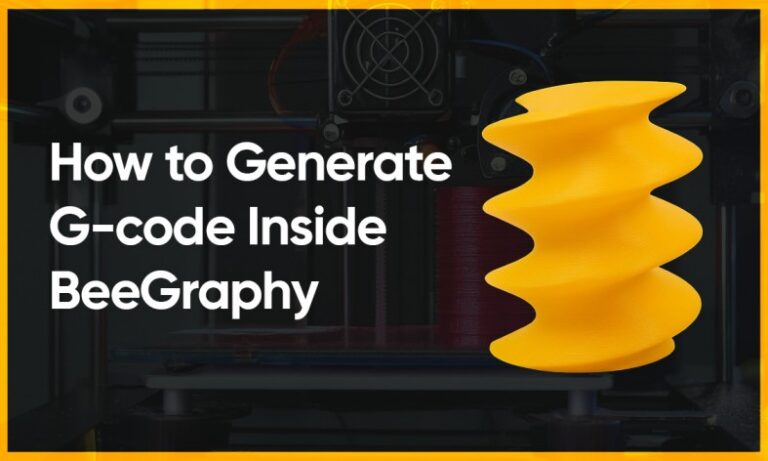Table of Contents
Breaking into the 3D design world in 2025 isn’t easy. Marketplaces are crowded, file formats feel restrictive, licensing terms confuse more than they clarify, and earnings often fall short of the effort put in. To explain these struggles in a relatable way, we’ve created an imaginary artist named Mira , a character who represents the everyday challenges real 3D creators face. Through her story, this blog explores the barriers holding artists back and shows how BeeGraphy offers a smarter, more sustainable way for them to showcase, share, and monetize their work.
Mira is an imaginary 3D artist, created to represent the everyday challenges faced by thousands of designers in 2025. She has just finished a sleek modular furniture model — clean geometry, sharp textures, and a render polished enough to share with the world. Like most 3D creators, her goal wasn’t only to perfect the technical details but also to let people experience her work, reuse it in their projects, and ideally purchase it.
Yet the excitement quickly fades. The first marketplace she tries rejects her file because of rigid format rules. On another platform, her design is buried under thousands of listings with little to no visibility. Licensing terms are unclear, and when someone finally shows interest, the transaction process feels unnecessarily complicated.
Mira’s story highlights a truth many 3D artists know too well: creating digital models is hard, but selling and sharing them can feel even harder. While the creative process flows naturally, the existing platforms for showcasing and monetizing 3D work often add barriers that leave talent unseen and undervalued.
The Hard Truth About Showcasing 3D Models Online
Mira’s situation wasn’t unique. In fact, it’s a shared reality for many 3D artists who try to turn their creativity into income. The internet is filled with marketplaces and platforms promising exposure and sales, but the challenges start piling up once you dive in.
1. Marketplace Overcrowding
Mira’s model quickly disappeared into an ocean of millions on the big-name platforms. Her designs barely got noticed unless she paid for ads or was already an established seller. This often feels like shouting into a void for a new or mid-level artist.
2. Strict File & Format Restrictions
Mira discovered that each platform had its own “rules”, preferred file types, polygon limits, and texture sizes. A model that worked perfectly in one place was rejected in another. Instead of focusing on her art, she spent hours reworking files to meet technical checklists.
3. Confusing Licensing & Pricing
When a potential buyer asked Mira about licensing terms, she wasn’t sure how to respond. Was her model royalty-free? Could it be resold? Was she underpricing or overpricing? These unclear guidelines made her second-guess every step, often undervaluing her work.
4. Low Earnings Despite Hard Work
Even when Mira managed to sell, the platform took a significant cut, sometimes up to 40–50%. After fees, she realized she was barely making anything compared to the hours she had invested designing and perfecting the model.
5. Limited Control Over Presentation
What frustrated Mira most was how little control she had over how her work was displayed. Thumbnails were auto-generated, previews were clunky, and there was no way to tell the story behind her model, no space to explain its concept, features, or adaptability. Her art felt reduced to a single image in a massive catalogue.
These pain points are where most 3D artists get stuck. While their passion for creating remains strong, the selling process feels like a never-ending struggle, leaving many talented creators questioning whether it’s even worth it.
The Missing Support Every 3D Artist Feels
After weeks of struggling, Mira sat back and asked herself: “Why does selling 3D models feel harder than creating them?”
The problem wasn’t her skill or creativity; it was the system. The tools available to her weren’t built with 3D artists in mind. What she (and thousands like her) really needed was a marketplace that:
1. Put Artists First, Not Platforms
The platform should be designed around their workflow instead of forcing artists to adapt to rigid rules and hidden algorithms. 3D artists need the freedom to upload, showcase, and sell their work without jumping through unnecessary hoops.
2. Offered True Control & Customization
Selling a 3D model shouldn’t just be about uploading a file. Artists deserve the ability to present their models the way they want, with clear previews, detailed descriptions, and storytelling that adds value.
3. Made Licensing & Pricing Transparent
No more second-guessing or fearing exploitation. Clear licensing options and flexible pricing structures would give artists confidence, ensuring buyers understand precisely what they’re getting, and creators get paid fairly.
4. Created a Community, Not Just a Catalogue
Mira realized she didn’t just want to sell; she tried to connect. A place where artists exchange feedback, learn from one another, and grow together is far more powerful than just another listing site.
5. Turned Creativity into Commerce Without Compromise
At their core, 3D artists need a system that values both artistry and business. They shouldn’t have to choose between their creative freedom and financial sustainability; the two should go hand in hand.
BeeGraphy’s Answer to Every 3D Artist’s Struggle
When Mira discovered BeeGraphy, something clicked. For the first time, she felt like she had found a platform that didn’t just tolerate 3D artists, it was built for them.
BeeGraphy bridges the gap between artistry and business, giving creators the freedom to design and the tools to thrive commercially. Here’s how:
1. A Marketplace Designed for 3D Artists
Unlike generic digital marketplaces, BeeGraphy is a space dedicated to 3D creators. Every feature is crafted around the needs of people who model, render, and build in 3D. This means your models don’t get lost in a sea of unrelated digital files; they stand in the spotlight.
2. The BeeGraphy Editor:
Create → Publish → Sell
What sets BeeGraphy apart is that it isn’t just a marketplace; it also comes with a built-in, cloud-based editor.
- Artists can design parametric 3D models directly in the editor.
- Once the model is ready, it can be instantly published to the marketplace without needing third-party tools.
- The editor allows creators to set up rules, parameters, and configurations that buyers can later interact with, turning a simple 3D file into a customizable product.
This workflow removes friction: you don’t juggle between multiple apps or formats. You create, configure, and commercialize, all in one place.
3. Configurators that Empower Buyers and Artists
Instead of selling static 3D models, BeeGraphy allows creators to turn their work into interactive, configurable products. Buyers can adjust dimensions, parameters, or variations; each customization means more value (and more sales) for the artist.
For Mira, this wasn’t just another marketplace. It was a shift in mindset: from feeling like she was giving away her models to feeling like she was building a business around them.
And the best part? BeeGraphy isn’t just about selling models; it’s about building a community of creators who grow together.
Join the Beegraphy Discord Community
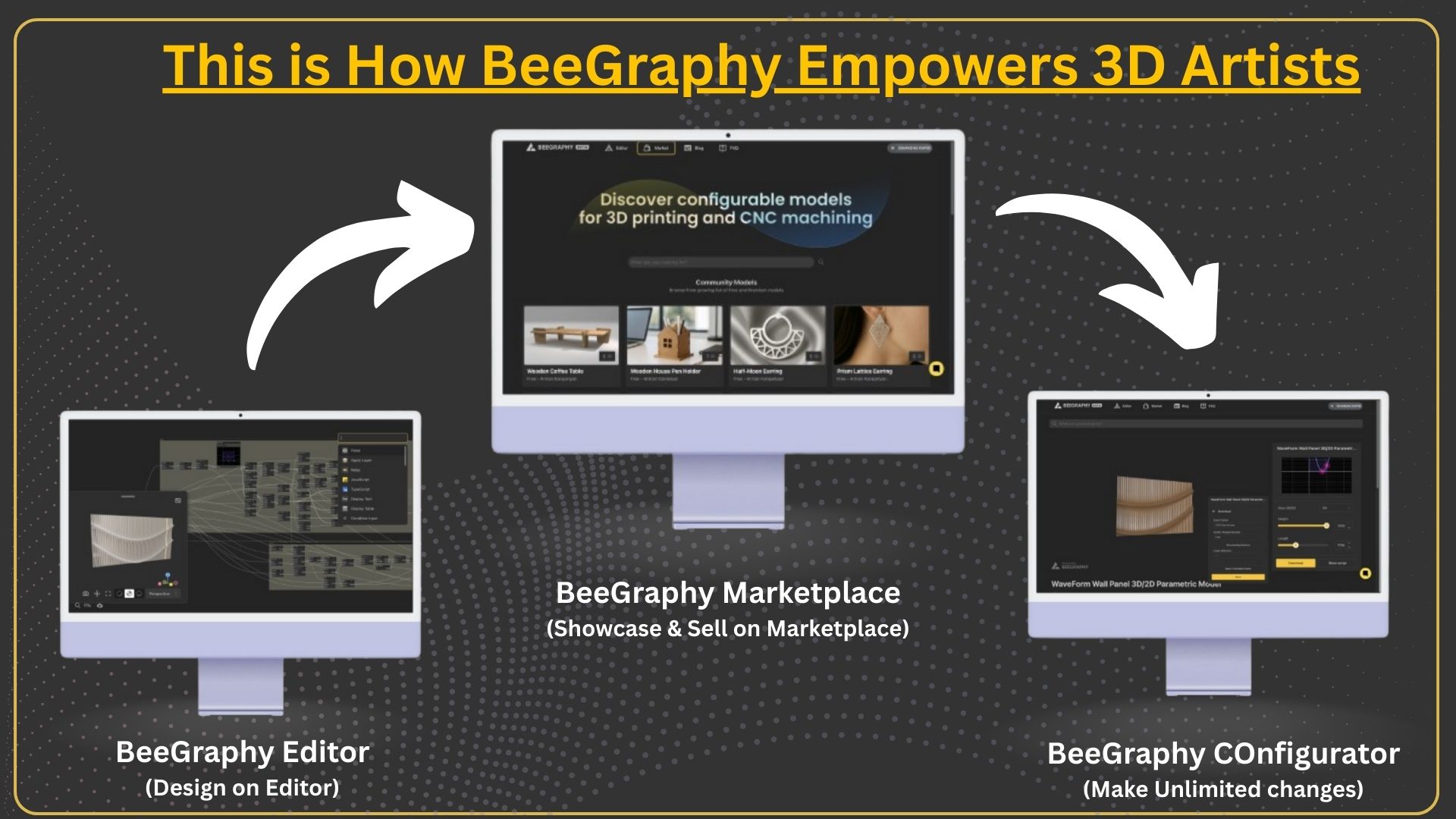
BeeGraphy’s platform for 3D artists, featuring the Editor, Marketplace, and Configurator tools.
A New Era for 3D Artists
When Mira looks back at her journey, the difference feels like night and day. She once felt trapped in outdated workflows — exporting static files, losing hours in endless revisions, and watching her models get undervalued. But with BeeGraphy, that cycle finally broke.
Now, her creations are no longer one-off assets but living, evolving systems that artists, designers, and buyers can interact with. BeeGraphy’s editor allows her to design parametrically and instantly share her models on the marketplace. And the marketplace itself has become more than just a storefront — it’s a stage where her work reaches people who truly value adaptability and creativity. The growing community ensures she isn’t working alone anymore but advancing alongside other creators.
Mira has finally let go of the tension she once carried: the frustration of wasted effort, the helplessness of outdated platforms, and the invisibility of her talent. In their place came clarity, opportunity, and growth.
For any 3D artist who has ever faced the same struggles, the lesson is simple:
-
You don’t have to keep fighting the old way.
-
There’s a platform built for the way creators actually work today.
-
And that platform is BeeGraphy.
Mira’s story isn’t just hers. It’s a glimpse of what’s possible for every 3D creator ready to take back control of their art, their process, and their future.


